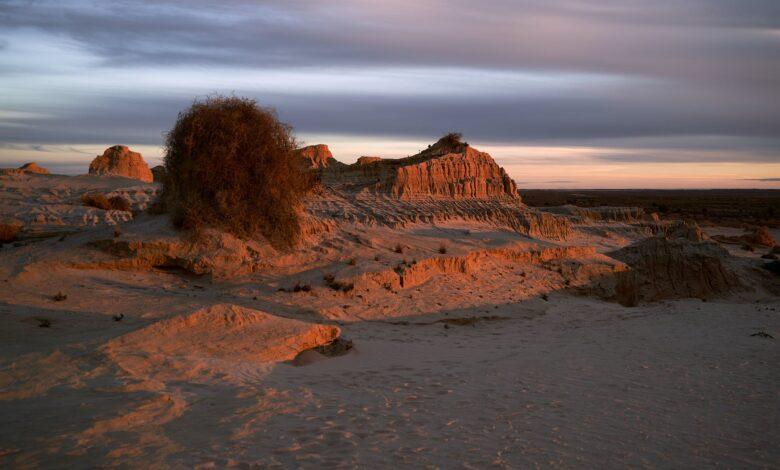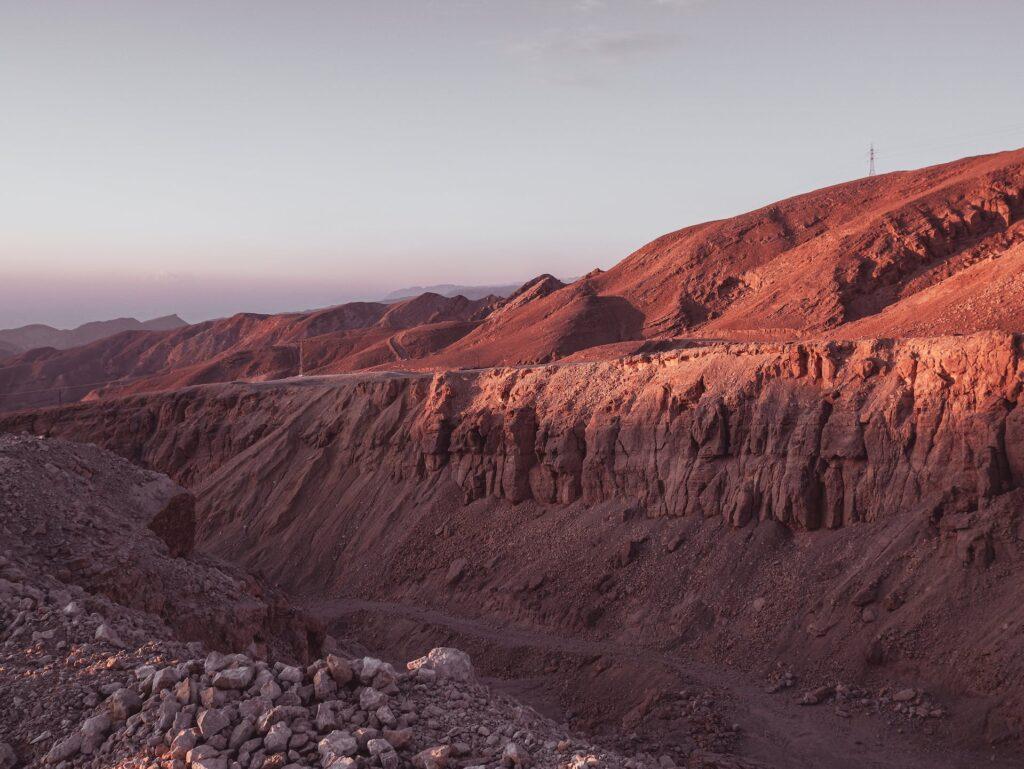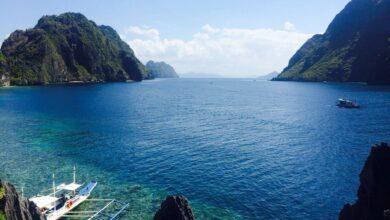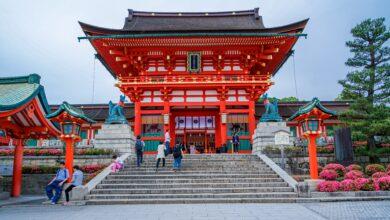🌄 Adventures in the Australian Outback: Uluru and Beyond 🏜️
Exploring the Majestic Landscapes and Wonders of the Red Centre

Introduction
Imagine standing in the heart of the Australian Outback, surrounded by an expansive and untamed wilderness. The air is dry, the sun is scorching, and the sense of adventure is palpable. Welcome to the Australian Outback, a place where the rugged beauty of the landscape is matched only by its rich cultural heritage.
In this blog post, we will embark on a journey to explore the allure of the Australian Outback, focusing on the iconic Uluru and the hidden treasures that lie beyond. Located in the Red Centre of Australia, the Outback isn’t just a destination; it’s where travelers from around the world come to experience the vastness, the spirituality, and the adventure of the Australian wilderness.
So, pack your bags, lace up your boots, and join us as we uncover the adventures that await in the Australian Outback, with Uluru as our starting point.
The Australian Outback: A Landscape Like No Other
Description of the vast and iconic Outback terrain
The Australian Outback, a vast and remote expanse, stands as a testament to the awe-inspiring power of nature. Covering nearly 2.5 million square miles of the Australian continent, the Outback is a landscape like no other. It is a region that has captivated the imagination of travelers and adventurers for generations, drawing them in with its striking beauty and unique character.
The Outback’s terrain is characterized by its dramatic contrasts and extremes. This arid landscape is dominated by endless stretches of red desert, rocky plateaus, and rugged mountain ranges. The famous Simpson Desert, for instance, is known for its mesmerizing red sand dunes that seem to stretch on infinitely. These dunes are as striking as they are challenging to navigate, making them a favorite among thrill-seekers and off-road enthusiasts.
Yet, the Outback is not just a barren wasteland. Amidst the seemingly desolate stretches of land, there are lush oases and hidden waterholes, where resilient flora and fauna have adapted to the harsh conditions. These pockets of life provide an oasis for weary travelers and a glimpse into the tenacity of nature.
The unique geological and cultural significance of Uluru
One of the most iconic symbols of the Australian Outback is Uluru, a massive sandstone rock formation that holds both geological and cultural significance. Often referred to as Ayers Rock, this colossal monolith stands approximately 1,142 feet tall and stretches over 5.8 miles in circumference. Its sheer size and distinctive rusty-red hue make it a remarkable sight against the backdrop of the Outback.
Geologically, Uluru is estimated to be around 600 million years old, and it is believed to be the tip of a much larger rock that extends far below the surface. Over millennia, the rock has eroded into its present shape, creating unique caves, crevices, and overhangs that captivate geologists and nature enthusiasts.
Culturally, Uluru holds immense significance for the Indigenous Anangu people, who have lived in the region for tens of thousands of years. For the Anangu, Uluru is a sacred site, rich in mythological and spiritual importance. The rock is intricately woven into their Dreamtime stories, which are the foundation of their cultural beliefs and practices.
Visiting Uluru is a profound and respectful experience, as it allows travelers to appreciate the deep connection between the land and its custodians. There are guided tours available that provide insights into the cultural and spiritual aspects of Uluru, allowing visitors to gain a deeper understanding of the profound bond that exists between the Indigenous people and this remarkable natural wonder.
Ideal times of the year for visiting the Outback
When planning a journey to the Australian Outback, timing is essential. The region’s climate can be harsh and unforgiving, making it important to choose the right time of year for your adventure. The best time to visit the Outback is during the Australian winter, which falls between June and August.
During these months, the Outback experiences cooler temperatures, making outdoor activities and exploration more comfortable. The scorching heat of the Australian summer can be not only uncomfortable but also dangerous, so avoiding the peak of summer, from December to February, is advisable.
Additionally, the winter season offers the unique opportunity to witness the Outback’s breathtaking landscapes adorned with wildflowers. This burst of color and life in the otherwise arid terrain is a sight to behold and adds an extra layer of beauty to your experience.
It’s worth noting that the Outback is also famous for its stunning night skies. Clear, crisp winter nights provide the perfect conditions for stargazing, and the absence of light pollution in the remote Outback allows you to witness the Milky Way and countless constellations in all their glory.

Uluru: The Heart of the Red Centre
The cultural and spiritual significance of Uluru
Uluru, also known as Ayers Rock, is undeniably the heart of the Red Centre in Australia and holds profound cultural and spiritual significance for the Indigenous Anangu people. This massive sandstone monolith, standing at approximately 1,142 feet tall and extending over 5.8 miles in circumference, is not just a geological wonder but a sacred site deeply woven into the fabric of Anangu culture.
For the Anangu, Uluru is a place of great spiritual importance. It is a focal point in their Dreamtime stories, which serve as a repository of cultural knowledge, values, and spirituality. These stories explain the creation of the land, its features, and the relationships between the people, their environment, and the spiritual realm.
Visitors to Uluru can gain a deeper understanding of this spiritual significance through guided tours led by Indigenous custodians. These tours provide insights into the Dreamtime stories, the symbolism of various rock formations, and the Anangu people’s enduring connection to the land.
Activities and experiences around Uluru
While Uluru itself is a mesmerizing attraction, the surrounding area offers a wealth of activities and experiences for visitors. Here are some of the highlights:
- Uluru-Kata Tjuta National Park: The park, which encompasses both Uluru and the Kata Tjuta rock formations, offers numerous walking trails, allowing you to get up close to these natural wonders. The Valley of the Winds walk at Kata Tjuta is a favorite, offering breathtaking views.
- Sunrise and Sunset Viewing: Witnessing the changing colors of Uluru at sunrise and sunset is a magical experience. The rock seems to come alive with a warm, reddish glow as the sun’s rays play upon its surface.
- Camel Tours: Explore the desert on camelback, a unique and leisurely way to take in the Outback’s beauty.
- Stargazing: The Red Centre is known for its clear night skies. Join an astronomy tour to marvel at the stars and constellations that light up the night.
- Cultural Performances: Attend cultural performances to witness traditional dances, music, and art that reflect the rich heritage of the Anangu people.
Ethical considerations when visiting sacred sites
Visiting Uluru and other sacred sites in the Red Centre comes with a responsibility to show respect and consideration for the culture and spirituality of the Indigenous Anangu people. Here are some ethical considerations to keep in mind:
- Cultural Respect: Learn about the cultural significance of Uluru before your visit. Understand the stories, traditions, and beliefs associated with the site to show appropriate respect.
- Observe Local Guidelines: Abide by the guidelines and rules set by the national park authorities and the Anangu people, including respecting restricted areas and photography restrictions.
- Leave No Trace: Practice responsible tourism by not littering and taking care not to damage the environment or cultural heritage.
- Support Indigenous Communities: Consider purchasing authentic Indigenous art and products to support local communities. Ensure that your purchases are ethically sourced.
- Educate Yourself: Take the time to educate yourself and your fellow travelers about the cultural sensitivities of the area and encourage respectful behavior.
Beyond Uluru: Exploring the Outback’s Hidden Treasures
Kata Tjuta (The Olgas): A mysterious rock formation
While Uluru rightfully takes the spotlight in the Red Centre, its lesser-known neighbor, Kata Tjuta, also known as The Olgas, is a captivating and mysterious rock formation that should not be missed. Situated in the same Uluru-Kata Tjuta National Park, Kata Tjuta is a group of 36 domed rock formations that hold their own enchanting secrets.
The name “Kata Tjuta” means “many heads” in the local Anangu language, and it’s easy to see why. These giant domes, composed of conglomerate rock, create a striking contrast to the solitary grandeur of Uluru. Some of the domes reach heights even greater than Uluru, with Mount Olga standing at 1,975 feet.
Exploring Kata Tjuta offers a sense of mystery and adventure. The Valley of the Winds walk is a popular choice, allowing you to delve into the heart of this unique formation. The landscape is ever-changing, with hidden gorges, lush vegetation, and panoramic views that will leave you in awe. The spiritual significance of Kata Tjuta to the Anangu people adds an extra layer of reverence to your visit.
Kings Canyon: A breathtaking chasm in the desert
Kings Canyon, a remarkable geological formation, is another hidden treasure in the Australian Outback. Located within Watarrka National Park, this breathtaking chasm is known for its towering sandstone walls, ancient cycad palms, and lush, hidden oases.
The highlight of a visit to Kings Canyon is the Kings Canyon Rim Walk. This challenging but rewarding hike takes you on a journey along the canyon’s edge, offering spectacular vistas of the surrounding desert landscape. The walk features iconic landmarks such as the Lost City and the Garden of Eden, where you can cool off by a natural pool surrounded by vibrant greenery.
The sandstone walls of the canyon showcase the area’s geological history, with each layer of rock telling a story of millions of years. The vibrant colors of the rock formations against the clear blue sky create a surreal and stunning visual contrast.
The West MacDonnell Ranges: A hidden oasis in the Outback
Nestled within the heart of the Australian Outback, the West MacDonnell Ranges are a hidden oasis of natural beauty and wonder. Stretching over 120 miles, this impressive mountain range is a treasure trove of gorges, waterholes, and cultural significance.
The range is home to several notable sites, including Simpsons Gap, Standley Chasm, and Ormiston Gorge. These locations offer refreshing waterholes, lush vegetation, and the chance to spot native wildlife such as wallabies and bird species.
For the adventurous traveler, the Larapinta Trail, which winds through the West MacDonnell Ranges, provides an opportunity for extended exploration and immersion in the rugged yet stunning terrain. The sunsets over these ancient landscapes are nothing short of breathtaking.
Adventures in the Outback
Outback camping and stargazing
Embarking on an adventure in the Australian Outback is incomplete without experiencing the thrill of outback camping and the mesmerizing wonder of stargazing. The vast, remote landscapes of the Outback provide an ideal canvas for a camping experience like no other.
Camping in the Outback allows you to connect with nature in a profound way. There are various campgrounds and sites available, from basic bush camping to more developed facilities with amenities. As you set up camp under the vast canopy of the southern hemisphere’s night sky, you’ll be surrounded by the solitude and tranquility of the desert, a far cry from the hustle and bustle of city life.
One of the greatest highlights of outback camping is the opportunity for stargazing. The clear, unpolluted skies of the Outback offer an unparalleled view of the cosmos. The Southern Hemisphere is known for its unique celestial features, including the Southern Cross and the Magellanic Clouds. With minimal light pollution, you can witness the Milky Way in all its glory. It’s an awe-inspiring experience to gaze up at a sky filled with countless stars and constellations, making you feel like you’re a part of the universe itself.
Bushwalking and wildlife encounters
Exploring the Australian Outback on foot is an adventure that brings you up close and personal with its rugged beauty and diverse wildlife. Bushwalking, or hiking, offers a chance to traverse the Outback’s unique terrain and encounter its remarkable flora and fauna.
The Outback is home to a wide variety of wildlife, from kangaroos and wallabies to echidnas and colorful bird species. As you venture into the arid landscape, you’ll have the opportunity to spot these incredible creatures in their natural habitat. It’s essential to approach wildlife respectfully and keep a safe distance to avoid disturbing their routines.
The diverse landscapes of the Outback offer numerous bushwalking opportunities, ranging from easy walks to challenging treks. For instance, you can explore the dramatic sandstone formations of Kings Canyon or hike along the Larapinta Trail, which stretches over 140 miles through the West MacDonnell Ranges. These journeys take you through pristine gorges, past ancient rock formations, and alongside waterholes, providing both physical and spiritual enrichment.
Indigenous experiences and cultural insights
A significant aspect of any Outback adventure is the opportunity to engage with the Indigenous culture of the land. The Indigenous peoples of the Outback, particularly the Anangu of the Red Centre, have a rich history and a deep connection to the land that spans thousands of years.
To gain cultural insights and enrich your experience, consider participating in Indigenous tours and experiences. These might include guided walks with Indigenous leaders who share their knowledge of the land, its stories, and its spiritual significance. You can also attend cultural performances that feature traditional dance, music, and art.
Respect and cultural sensitivity are paramount when engaging with Indigenous communities and their traditions. It’s essential to listen, learn, and appreciate the ancient wisdom and spirituality that the Indigenous people bring to the Outback. By doing so, you’ll not only create unforgettable memories but also support the preservation of their rich heritage.
Safety and Responsible Travel
Precautions and preparations for the Outback
Traveling through the Australian Outback is an adventure of a lifetime, but it also comes with unique challenges and considerations. Here are some precautions and preparations to ensure a safe and enjoyable journey:
- Inform Others: Before venturing into the Outback, let someone know your travel plans, including your intended route and expected return date. In the vast, remote landscape, communication can be limited, so having a backup plan is crucial in case of emergencies.
- Vehicle Maintenance: If you’re traveling by vehicle, ensure it’s in excellent condition. Carry spare tires, tools, and ample water and fuel. The Outback’s rugged terrain can be unforgiving, and being stranded without supplies can be dangerous.
- Water and Supplies: The Outback’s arid conditions demand careful water management. Carry more water than you think you’ll need, and replenish your supplies whenever possible. Stock up on non-perishable food items and essential supplies to last your journey.
- Weather Awareness: The Outback can experience extreme weather conditions, from blistering heat to sudden rainstorms. Be prepared for these variations by packing clothing for both hot and cool weather and monitoring weather forecasts regularly.
- Navigation Tools: Reliable navigation tools are essential, as the Outback’s vastness can easily lead to disorientation. GPS, maps, and compasses are invaluable for staying on track.
- Emergency Equipment: Pack a first aid kit, fire extinguisher, satellite phone or EPIRB (Emergency Position Indicating Radio Beacon), and signaling devices. These can be lifesavers in case of accidents or emergencies.
Respecting the environment and local Indigenous communities
The Australian Outback is not only a place of natural beauty but also of cultural significance to Indigenous communities. Respecting the environment and local cultures is essential when traveling through this land. Here’s how to do it:
- Stay on Designated Paths: Stick to established trails and roads to minimize damage to the fragile ecosystem. Off-roading can have long-lasting negative effects on the environment.
- Leave No Trace: Practice responsible tourism by cleaning up after yourself and leaving no litter behind. Dispose of waste properly and minimize your impact on the land.
- Respect Cultural Sites: The Outback is home to ancient Indigenous cultural sites. Treat them with respect and do not touch, remove, or disturb any artifacts or markings. Obey any signs or guidelines provided by local authorities.
- Learn About Indigenous Culture: Educate yourself about the cultures and traditions of the Indigenous communities in the area you’re visiting. Understanding their customs and beliefs will help you show respect and avoid cultural insensitivity.
- Ask for Permission: If you plan to enter or camp on Indigenous-owned land, seek permission from the traditional landowners. This helps to maintain a positive relationship between travelers and local communities.
Ethical and sustainable travel practices
Sustainable travel in the Outback not only benefits the environment and local communities but also enhances the quality of your experience. Here are some ethical practices to follow:
- Choose Responsible Tour Operators: When booking tours or guided experiences, opt for operators committed to sustainable practices and cultural sensitivity.
- Reduce Plastic Waste: Minimize single-use plastic by carrying a refillable water bottle and reusable containers. Properly dispose of any waste and recycle where possible.
- Conserve Water: Water is a precious resource in the Outback. Use it sparingly, whether for personal hygiene, cooking, or cleaning.
- Support Local Economies: Purchase locally made products and support Indigenous artisans. This helps boost the local economy and ensures that your money benefits the communities you visit.
- Reduce Carbon Footprint: Minimize your carbon footprint by carpooling or using public transportation when available. Consider carbon offset programs for your travel.
By taking these precautions and adopting responsible and sustainable travel practices, you can make the most of your Outback adventure while ensuring the safety of yourself and others, respecting the environment, and supporting the local communities that call this unique landscape home.
FAQs
Q. Is Uluru the same as Ayers Rock?
A. Yes, Uluru is often referred to as Ayers Rock. It is the same iconic sandstone formation.
Q. Can you climb Uluru?
A. Climbing Uluru is discouraged out of respect for its cultural and spiritual significance. Visitors are encouraged to enjoy the rock from designated viewing areas.
Q. What’s the best time to visit the Outback?
A. The cooler months from April to September are the most pleasant for an Outback adventure.
Q. Are there accommodation options in the Outback?
A. Yes, there are various accommodations near Uluru, ranging from campsites to luxury resorts.
Q. How far is Alice Springs from Uluru?
A. Alice Springs is approximately 450 kilometers (280 miles) from Uluru, making it a convenient base for exploring the region.
Q. Is it safe to encounter wildlife in the Outback?
A. While most wildlife in the Outback is not dangerous, it’s essential to keep a safe distance and avoid feeding any animals you encounter.
Conclusion
As the sun sets over the vast, arid landscape of the Australian Outback, it becomes evident that this wild and untamed region is not just a destination; it’s a sanctuary for those seeking the perfect blend of adventure, culture, and nature. We’ve explored the rugged beauty of Uluru, discovered hidden treasures in the Outback, and delved into the magic of this iconic Australian wilderness.
As you consider your next adventure, remember that the Australian Outback, with its unique landscapes and rich cultural heritage, beckons. Whether you’re an intrepid explorer in search of vast horizons or a curious traveler eager to experience the spirituality of Uluru, don’t hesitate. The Outback is calling, and it promises unforgettable experiences and cherished memories in every step you take through its boundless expanse. Get out there, embrace the adventure, and create your own story in this remarkable and remote part of the world.
UP NEXT





Facebook Comments